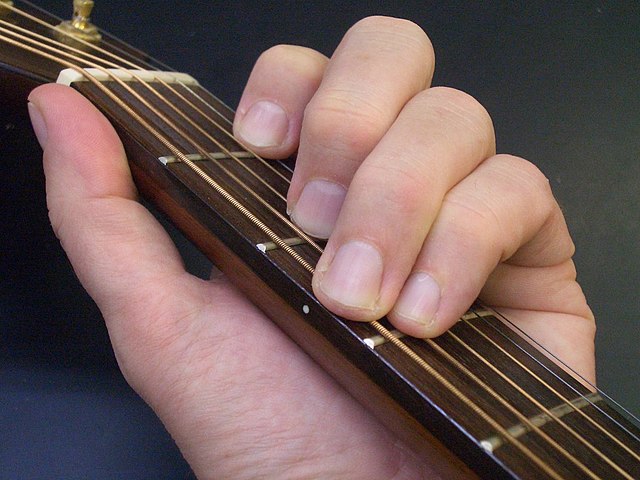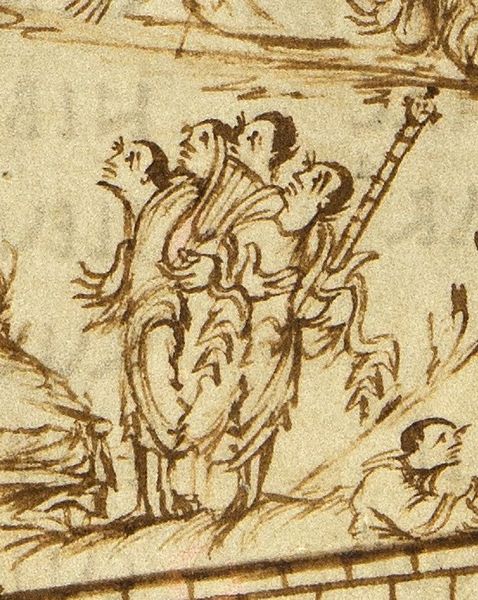The Appalachian dulcimer is a fretted string instrument of the zither family, typically with three or four strings, originally played in the Appalachian region of the United States. The body extends the length of the fingerboard, and its fretting is generally diatonic.
Appalachian dulcimer
Loraine Wyman, who gathered folk songs in the field and performed them in concert halls, shown in the May 1, 1917, issue of Vogue holding an Appalachian dulcimer.
Closeup of Aubrey Atwater playing dulcimer.
Courting dulcimer
A fret is any of the thin strips of material, usually metal wire, inserted laterally at specific positions along the neck or fretboard of a stringed instrument. Frets usually extend across the full width of the neck. On some historical instruments and non-European instruments, frets are made of pieces of string tied around the neck.
The neck of a guitar showing the nut (in the background, coloured white) and first four frets
Frets tied on to the neck of a saz; note microtonal frets between semitones.
China. Pipa with frets, Middle Tang Dynasty era (618–907 A.D.), from the Yulin Caves, cave 15
France, Utrecht Psalter, c. 850. During the Carolingian Renaissance an Anglo Saxon artist drew an image of a cythara with frets.








